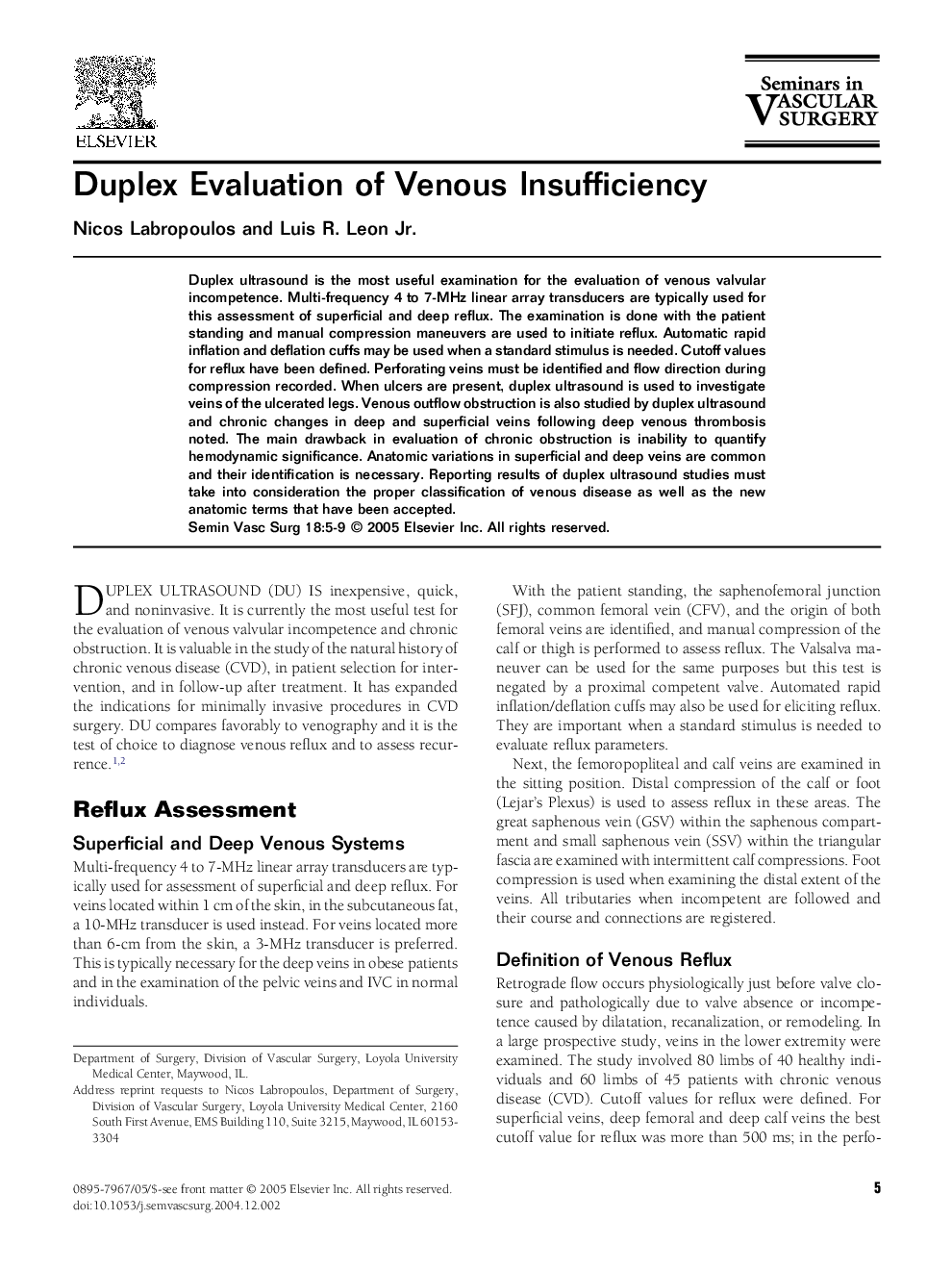| Article ID | Journal | Published Year | Pages | File Type |
|---|---|---|---|---|
| 9184811 | Seminars in Vascular Surgery | 2005 | 5 Pages |
Abstract
Duplex ultrasound is the most useful examination for the evaluation of venous valvular incompetence. Multi-frequency 4 to 7-MHz linear array transducers are typically used for this assessment of superficial and deep reflux. The examination is done with the patient standing and manual compression maneuvers are used to initiate reflux. Automatic rapid inflation and deflation cuffs may be used when a standard stimulus is needed. Cutoff values for reflux have been defined. Perforating veins must be identified and flow direction during compression recorded. When ulcers are present, duplex ultrasound is used to investigate veins of the ulcerated legs. Venous outflow obstruction is also studied by duplex ultrasound and chronic changes in deep and superficial veins following deep venous thrombosis noted. The main drawback in evaluation of chronic obstruction is inability to quantify hemodynamic significance. Anatomic variations in superficial and deep veins are common and their identification is necessary. Reporting results of duplex ultrasound studies must take into consideration the proper classification of venous disease as well as the new anatomic terms that have been accepted.
Related Topics
Health Sciences
Medicine and Dentistry
Cardiology and Cardiovascular Medicine
Authors
Nicos Labropoulos, Luis R. Jr,
